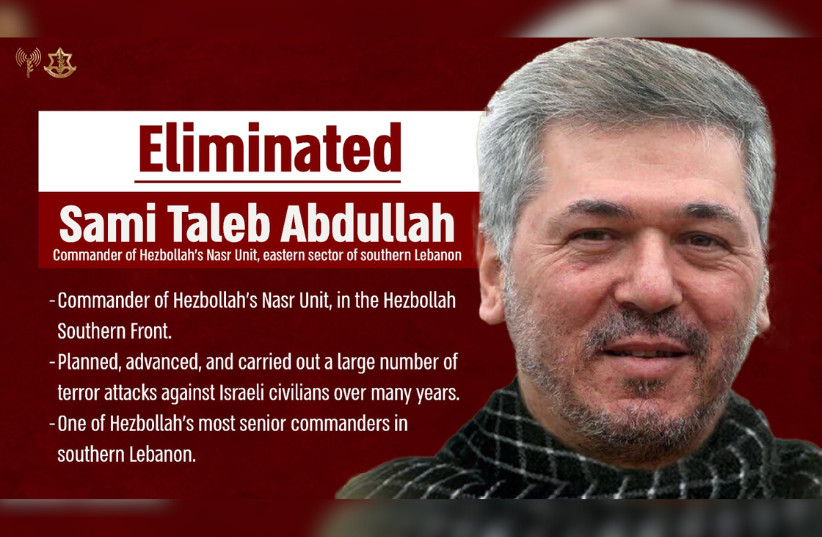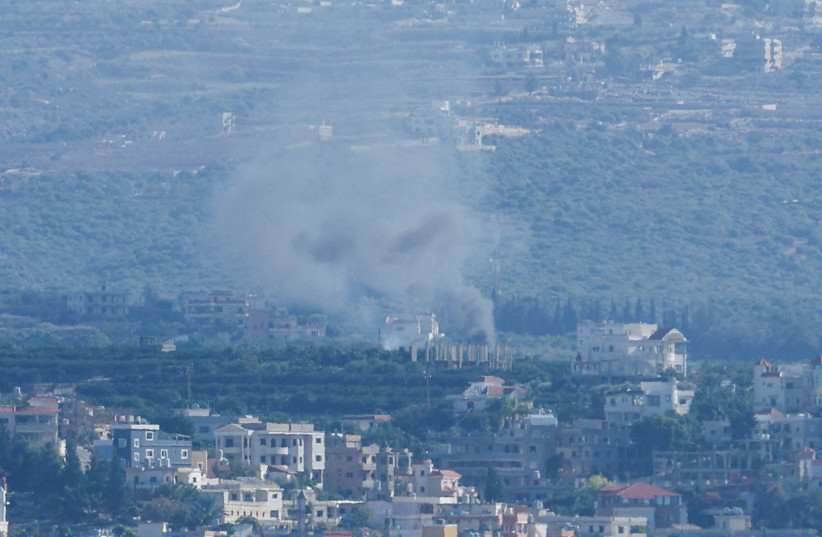A video has emerged on social media on Thursday that appears to show IDF soldiers firing a trebuchet at the Lebanese border, igniting plantations across the border.
A 'local initiative'
The military responded, stating, “This is a local initiative and not a tool that is widely used," Israeli state broadcaster KAN News reported.
Wow. Fighting Middle Age-mindset terrorists with Middle Age technology.The IDF soldiers built a TREBUCHET to clear foliage/bushes that Hezbollah have been hiding in and firing from.pic.twitter.com/24cURSYdw2
— Kosher (@KosherCockney) June 13, 2024
“The area on the Lebanese border is characterized by boulders, thickets, and dense thorn vegetation, which poses a challenge to the IDF troops deployed in defense.”
Maariv quoted the IDF as saying that the tool was built by reservists serving at an outpost on the northern border, and another military source said that the video was filmed over a month ago.
A trebuchet is an artillery weapon used primarily for siege purposes. They were used primarily in the medieval period.
Dr. Guy Stiebel, a military archeology expert at Tel Aviv University, explained to Globes why the IDF was utilizing such a weapon.
"Because of the great power it [the trebuchet] produces, there can be a wide range of possible uses: from engaging the enemy's forces through direct hits to the enemy's walls to allow the infantry to charge in," Stiebel was cited in Globes as saying.
"But what we saw is a third use, which also existed in the Middle Ages: launching targets beyond the fortifications to areas that cannot be observed directly."
Stiebel told Golbes the IDF was utilizing a trebuchet for land clearing.
"In the area next to the border, there is a thicket in which the other side can hide and launch equipment and weapons," he explained, adding that there were many creative ways in which such operations could be carried out using the trebuchet.
העדכון החדש של מייפל סטורי נראה מטורף pic.twitter.com/x2cmBJUm9i
— David Yerman (@davidyerman) June 13, 2024
The incident follows recent heightened tensions in northern Israel.
On Tuesday, the IDF killed Sami Taleb Abdullah, the most senior Hezbollah commander to be eliminated since October 7.

On Wednesday, Hezbollah fired a heavy barrage of some 250 rockets onto Israel's North. This constituted the largest amount of rockets fired at the area since the beginning of the Israel-Hamas war. In addition, this was the first time rockets were fired as far south as the area of Tiberias.
Earlier on Thursday, the military stated Israel Air Force (IAF) jets had struck Hezbollah military structures in the Ayta ash Shab area and terror infrastructure in the Aynata area of southern Lebanon.
Israel and Hezbollah have been engaged in intensifying cross-border conflicts since the beginning of the Israel-Hamas war.
Hezbollah has targeted northern Israel with numerous rocket and UAV barrages, which has seen the evacuation of communities near the border and the outbreak of several fires as a result of rockets and shrapnel.
In retaliation, the IAF has frequently struck strategic Hezbollah targets in southern Lebanon, including terror infrastructure and terrorists.

Policy experts have predicted immense destruction should Israel and Hezbollah engage in all-out war. According to researchers at the Alma Institute, Hezbollah has 150,000 mortars, 65,000 rockets with a range of up to 80 km, 5,000 rockets, and missiles with a range of 80-200 km, 5,000 missiles with a range of 200 km or more, 2,500 unmanned aerial vehicles (UAVs) - and hundreds of advanced missiles, such as anti-aircraft missiles or cruise missiles.
Sam Halpern and Shaked Sadeh contributed to this report.
